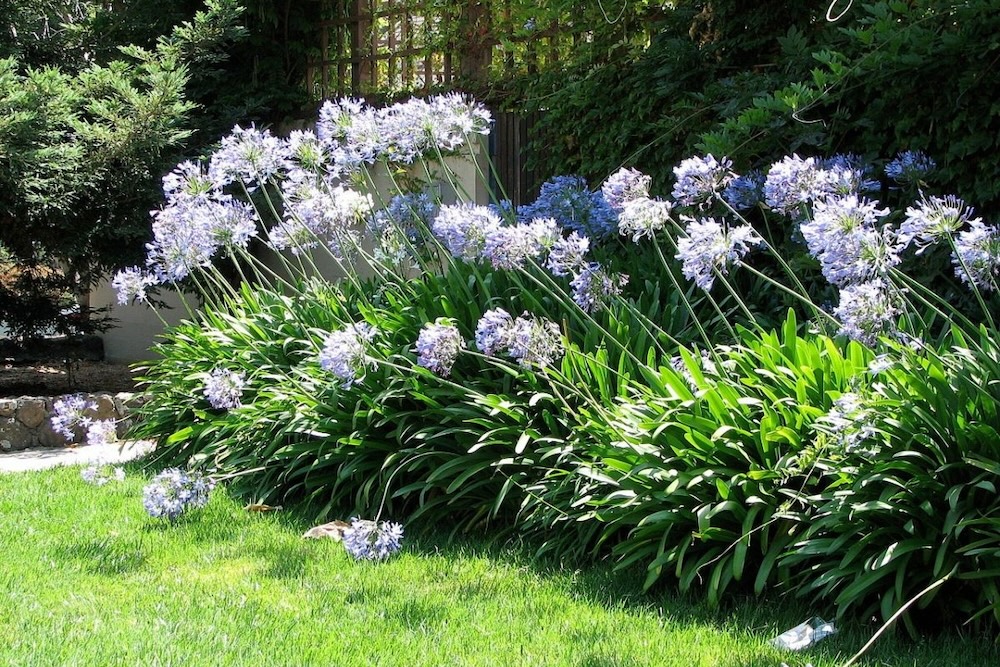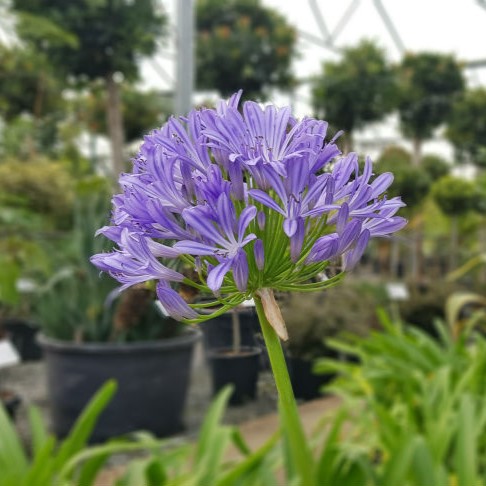Agapanthus Companion Plants: Perfect Pairings for Your Garden
Agapanthus Companion Plants: Perfect Pairings for Your Garden
Blog Article
Releasing the Secret to Successful Agapanthus Growing: Advice for a Flourishing Yard
In the world of gardening, cultivating agapanthus successfully requires a calculated technique that incorporates numerous elements of plant treatment. With mindful focus to detail, one can unlock the tricks to nurturing these spectacular flowers, causing a yard that prospers with appeal and vibrancy. By recognizing the subtleties of agapanthus farming, one can develop an atmosphere where these plants prosper and flower generously. In the adhering to conversation, we will certainly discover crucial pointers and methods that will certainly assist you in the direction of a growing agapanthus garden, providing insights right into ideal practices, soil conditions, sprinkling strategies, and a lot more.
Planting Agapanthus: Ideal Practices
When planting Agapanthus, proper dirt preparation is important for ensuring effective growth and development of these beautiful blossoms. Agapanthus, typically recognized as Lily of the Nile or African lily, prospers in well-draining soil with a somewhat acidic to neutral pH level - Agapanthus. Prior to planting, it is critical to change hefty clay soils with natural issue such as compost or peat moss to enhance drainage and supply vital nutrients for the plants
To grow Agapanthus, choose an area that obtains full sunshine to partial shade, as this will certainly promote healthy and balanced growth and plentiful flowering. Dig an opening twice the size of the plant's origin sphere and position the Agapanthus at the same deepness it was previously expanding. Gently backfill the opening with dirt, pressing down strongly to remove any kind of air pockets around the roots.
Water the freshly planted Agapanthus completely and proceed to keep the soil equally moist, specifically during the plant's active growing period. Agapanthus. Using a balanced plant food once a month can better sustain the plant's development and flowering. By complying with these finest techniques for planting Agapanthus, you can produce a magnificent display of these fascinating blossoms in your yard
Ideal Soil Conditions for Agapanthus
For optimum development and blooming success of Agapanthus plants, guaranteeing the dirt problems are optimal is essential. Agapanthus prospers in well-draining dirt with a somewhat acidic to neutral pH degree varying from 6.0 to 7.0. This kind of soil enables adequate water drainage, avoiding waterlogging which can result in root rot. To improve soil drain, think about adding organic matter such as compost or peat moss when preparing the growing site. Furthermore, Agapanthus chooses soil that is rich in nutrients, so integrating a well balanced fertilizer during the growing season can promote healthy growth and vibrant blooms.

Watering and Fertilizing Tips
To make sure healthy and balanced growth and lively flowers, appropriate watering and feeding methods are necessary for successful Agapanthus cultivation. Agapanthus plants profit from normal watering, especially during the growing period.
When it comes to over at this website feeding Agapanthus, a balanced plant food with equal parts nitrogen, phosphorus, and potassium can be used in the additional resources springtime to promote healthy and balanced development and flowering. Slow-release fertilizers are ideal for giving nutrients progressively over an extensive duration. Stay clear of over-fertilizing, as this can bring about too much vegetation growth at the expenditure of blossoms.
Furthermore, integrating natural issue like compost right into the soil can boost nutrient degrees and boost soil structure, assisting in the overall wellness of the Agapanthus plants. By complying with these watering and fertilizing tips, garden enthusiasts can ensure their Agapanthus plants grow and create stunning displays of blossoms.
Pruning and Deadheading Methods
Correct pruning and deadheading methods play an essential function in preserving the wellness and visual appeals of Agapanthus plants, matching the crucial techniques of watering and fertilizing for successful farming. Trimming Agapanthus entails eliminating invested flower heads, yellowing or dead leaves, and general shaping of the plant to promote far better development. Deadheading, the procedure of getting rid of faded blossoms, not just enhances the plant's look however additionally urges further flowering.
When deadheading Agapanthus, it is suggested to trim off the blossom stem at the base utilizing sharp, tidy shears. This procedure reroutes the plant's energy from seed manufacturing back into root visit homepage and vegetation development, promoting a much healthier and much more durable plant. Regular deadheading can prolong the flowering duration of Agapanthus and prevent self-seeding, which can cause congestion.
In terms of pruning, Agapanthus typically gain from a light trim after blooming to clean up the plant and encourage fresh growth. Reducing the invested blossom stems and getting rid of any kind of dead or broken vegetation aids preserve the plant's vitality and total look. Nonetheless, it is important to avoid cutting into the crown of the plant, as this can weaken its health.

Protecting Agapanthus From Pests and Diseases
Applying effective parasite and illness management approaches is important to securing the health and vitality of Agapanthus plants in cultivation. One usual insect that influences Agapanthus is the Agapanthus borer, a caterpillar that tunnels right into the plant, causing damage to the fallen leaves and flowers.
Along with pests, Agapanthus are prone to conditions such as root rot and fungal fallen leave spots. These problems can usually be stopped by ensuring appropriate water drainage and avoiding overwatering. Affected parts of the plant must be promptly removed to protect against additional spread if signs of illness show up. Fungicides might also be used as a therapy measure, complying with the maker's guidelines carefully. By staying attentive and resolving pest and disease concerns promptly, gardeners can help their Agapanthus grow and prosper.

Conclusion
Finally, successful farming of agapanthus needs correct planting methods, perfect dirt problems, adequate watering and feeding, normal pruning and deadheading, and defense from pests and illness. By complying with these tips and methods, gardeners can make sure a prospering garden full of beautiful agapanthus flowers. Agapanthus. Bear in mind to maintain constant treatment and focus to detail to promote the health and wellness and long life of these stunning plants
When planting Agapanthus, appropriate soil preparation is vital for guaranteeing effective growth and advancement of these attractive blossoms.Water the newly planted Agapanthus completely and continue to keep the dirt uniformly damp, particularly throughout the plant's energetic expanding period.For optimum development and growing success of Agapanthus plants, ensuring the soil conditions are perfect is important. When transplanting or planting Agapanthus, guarantee the soil is well-prepared to offer the required foundation for the plants to establish themselves successfully. One common pest that affects Agapanthus is the Agapanthus borer, a caterpillar that passages right into the plant, creating damages to the leaves and flowers.
Report this page